Corrine Riley is considered by collectors and museum professionals as an expert on quilting, specifically of African American quilts. Though she attended the School of the Art Institute of Chicago, her vast knowledge of quilts is entirely self-taught. While her prestigious quilt collection is coveted by museums and institutions and has been shown throughout the world, it is new art that she is creating herself that caught my eye. She spoke with me by telephone from her home in Mendocino County, California.
John Foster: Before I delve into this new and exciting work you are doing, I think it is important to give some background to our readers. How did you first begin your journey as one of the preeminent experts in African American quilts?
John Foster: Before I delve into this new and exciting work you are doing, I think it is important to give some background to our readers. How did you first begin your journey as one of the preeminent experts in African American quilts?
Corrine Riley: Well, it certainly began rather innocently. When I was about twenty-two I stopped in an antique shop in Chicago and was talking to the dealer about some quilts he had. He mentioned that he needed to get the quilt in question repaired and without thinking I said “I can do that!” He gave me the job and I basically figured out how to do it. I was just trying to make a few dollars to make a living—not start a business. But within a year or so, he had given me a few more and I started getting busy. It was a good thing for me. I had a new baby, and this was work I could do at home. A number of years later, I had mountains of quilts from collectors all over the country.
JF: So this restoration work of various quilts became your education about quilts?
CR: Absolutely! The more I did quilt restoration the more I learned. When you do restoration work, you become the hands of the original maker of that quilt. I used to scour flea markets for old textiles and fabrics. I mean, I was digging into piles of stuff no one wanted to get into, all in order to find vintage thread and fabrics. The idea in quality restoration work is to basically make what you do invisible to the quilt. So I mimicked the style of the quilter in making my repairs. That taught me a lot. I came to collect quilts by making offers on quilts that came in to me. If I liked it—I would offer to buy it. Most were happy to sell.
JF: What made you interested in African American quilts long before they became so collectible?
CR: The very nature of African American quilts suit my sensibilities. First, they are improvisational and the designs are totally unexpected. They makers had no prescribed systems for their quilts—that just did it. Most of these quilts are strip piece quilts. There is good research that shows this tradition came from grandparents bringing the knowledge with them to twentieth-century quilters. You can tell that strip piece quilting came from weavers with small looms.
There were deliberate breaks in the patterns. It wasn’t by accident. Look at their African fashions still today—bright colors and multiple patterns was a sign of affluence, a way of showing off. So yes, African American quilts are exciting because they are improvisational and do not follow rules.
JF: What about American or Eurocentric quilts? Do you collect those?
CR: (laughing) I call those “the other” quilts. Most of these do not appeal to me. I only collect those if they are highly graphic, unusual or different. The traditional American Victorian quilt is fussy. The stitches are tight. These quilters had to be perfect—it felt like busywork to me. Sure, they can be beautiful and pretty—but that is not what I like.
JF: You went to art school, so you are aware how African American quilts can relate to modernist and contemporary art. What artists do you connect to African American quilts in terms of similar attributes?
CR: You can put paintings by Paul Klee, Robert Motherwell, Josef Albers, and Georgia O’Keefe side-by-side to many of these quillts and the similarities are obvious. In fact, I have a video about this, and my website gives lots of examples of my collection.
JF: So, after thirty-five years of collecting quilts you have started making art. That’s exciting Corrine! Tell me more.
CR: Since early to mid-twentieth century African American quilts are almost impossible to find nowadays, I have had the time to start making my own art again. Of course, my skills in quilt restoration serve me well. And my passion for the improvisational qualities of African American quilts are in my psyche.
My show Fiber Optics is up now at a gallery in Summerland, California, called Just Folk. I create small, improvised works and even full-sized quilts. I also make crocheted chairs. It is a lot of fun and I am using all my years of experience in creating these works of art.
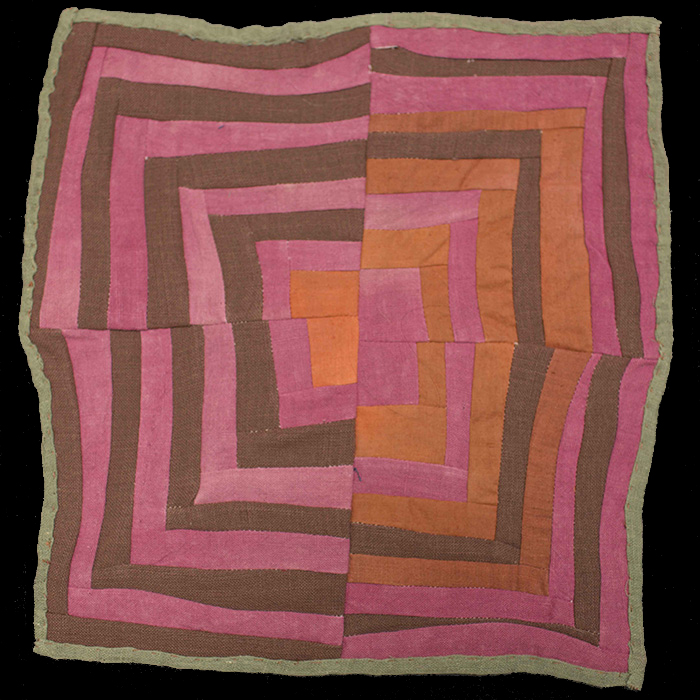
Housetop
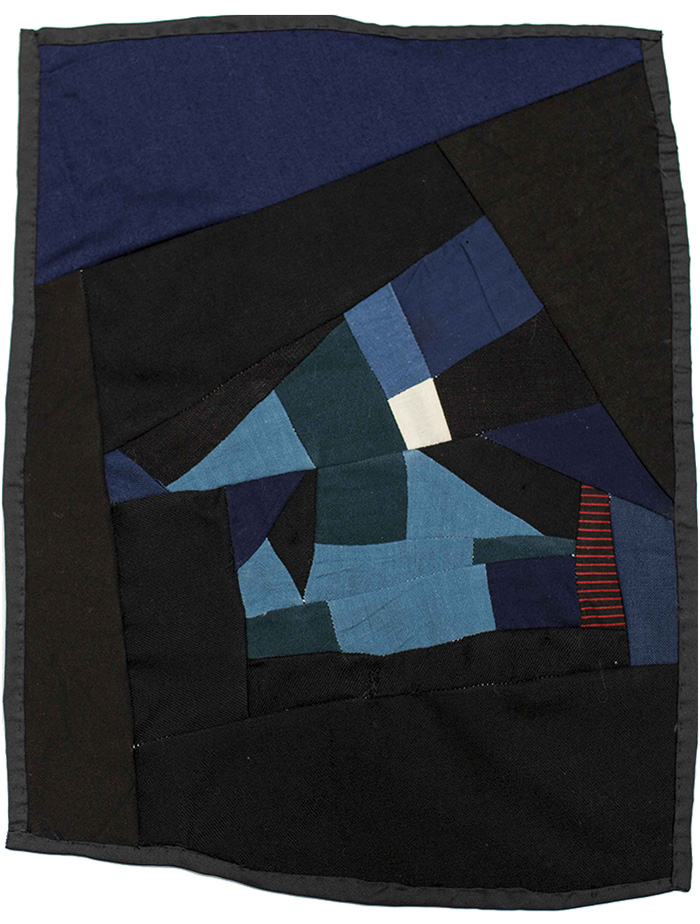 Hideout
Hideout A Piece for Everything
A Piece for Everything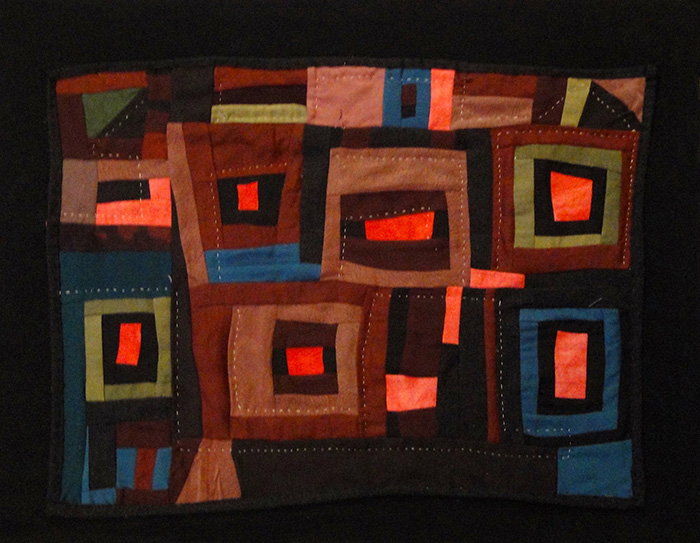
Electric Housetop

In the Village
 Learning the Language
Learning the Language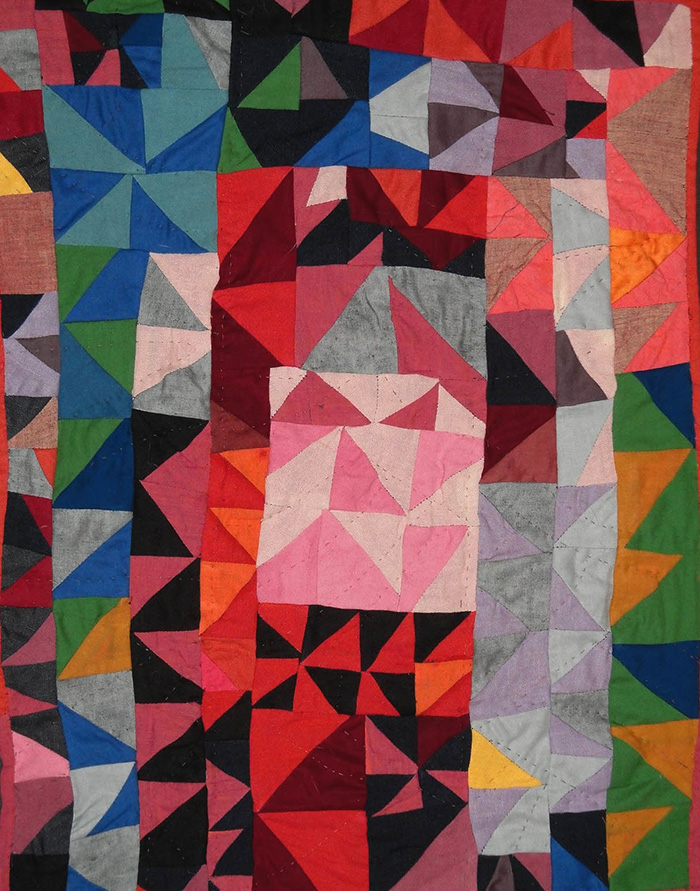 Mardi Gras
Mardi Gras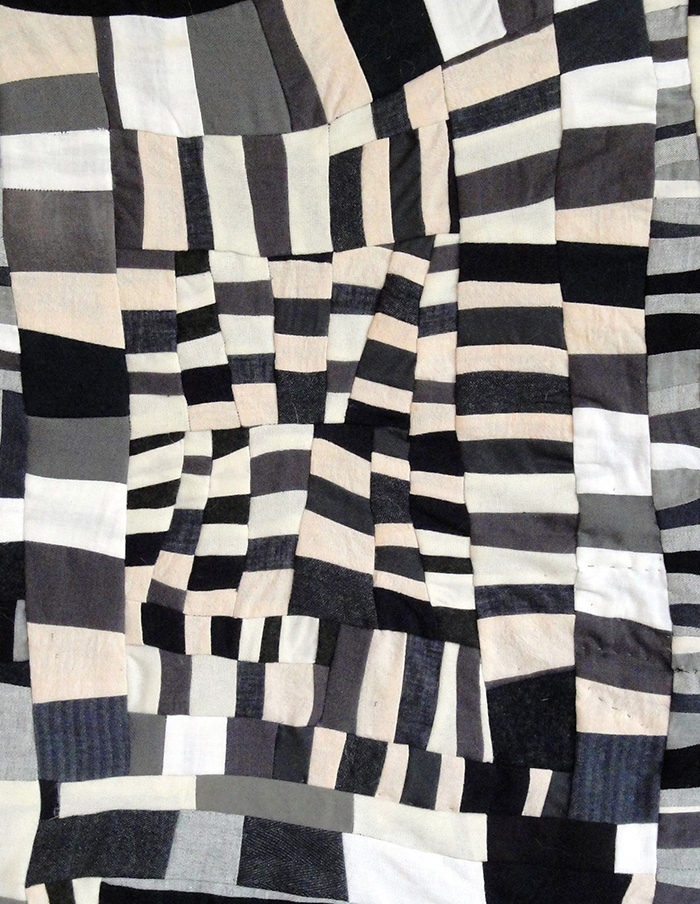 Vibration
Vibration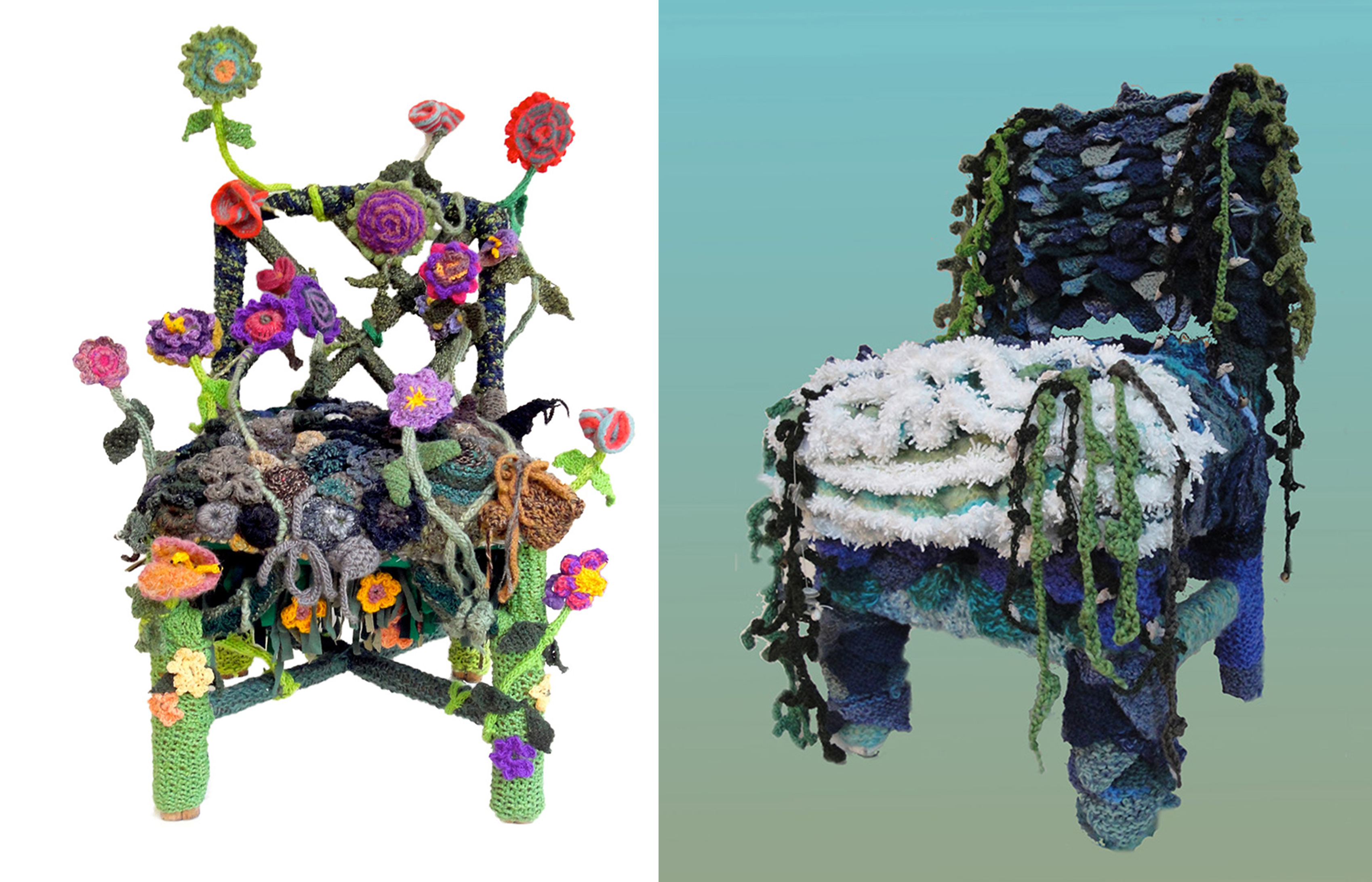 Upside Down Garden (l), Seascape (r)
Upside Down Garden (l), Seascape (r)